10.6: J. S. Bach- His Life and Legacy
- Page ID
- 72418
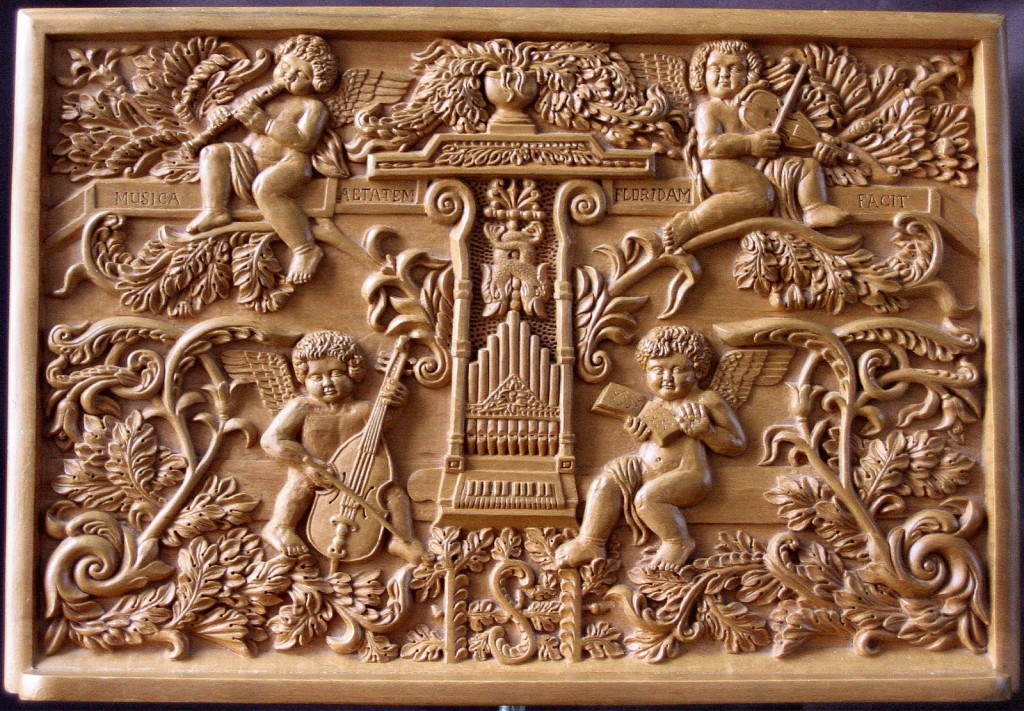
Introduction
Johann Sebastian Bach (31 March 1685–28 July 1750) was a German composer and musician of the Baroque period. He enriched established German styles through his skill in counterpoint, harmonic and motivic organization, and the adaptation of rhythms, forms, and textures from abroad, particularly from Italy and France. Bach’s compositions include the Brandenburg Concertos, the Goldberg Variations, the Mass in B minor, two Passions, and over three hundred cantatas of which nearly two hundred survive. His music is revered for its technical command, artistic beauty, and intellectual depth.
Bach was born in Eisenach, in the duchy of Saxe-Eisenach, into a great musical family. His father, Johann Ambrosius Bach, was the director of the town musicians, and all of his uncles were professional musicians. His father probably taught him to play the violin and harpsichord, and his brother, Johann Christoph Bach, taught him the clavichord and exposed him to much contemporary music. Apparently at his own initiative, Bach attended St. Michael’s School in Lüneburg for two years. After graduating, he held several musical posts across Germany: he served as Kapellmeister (director of music) to Leopold, Prince of Anhalt-Köthen, Thomaskantor in Leipzig, a position of music director at the main Lutheran churches and educator at the Thomasschule, where he served from 1723 to his death. He received the title of “Royal Court Composer” from Augustus III in 1736. Bach’s health and vision declined in 1749, and he died on 28 July 1750.
Bach had four composer sons. The music of one of them, Carl Philipp Emanuel Bach, was appreciated very highly from the later half of the 18th through the early 19th century, while Sebastian Bach’s music was hardly known.
J. S. Bach’s abilities as an organist were respected throughout Europe during his lifetime, although he was not widely recognized as a great composer until a revival of interest and performances of his music in the first half of the 19th century. He is now generally regarded as one of the greatest composers of all time.
Childhood (1685–1703)
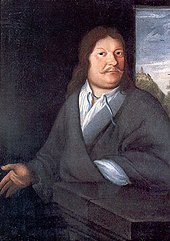
Johann Sebastian Bach was born in Eisenach, the capital of the duchy of Saxe-Eisenach, in the Thuringian region of the Holy Roman Empire, on 21 March 1685 O.S. (31 March 1685 N.S.). He was the son of Johann Ambrosius Bach, the director of the town musicians, and Maria Elisabeth Lämmerhirt.
He was the eighth child of Johann Ambrosius, (the eldest son in the family was 14 at the time of Bach’s birth)who probably taught him violin and the basics of music theory. His uncles were all professional musicians, whose posts included church organists, court chamber musicians, and composers. One uncle, Johann Christoph Bach (1645–93), introduced him to the organ, and an older second cousin, Johann Ludwig Bach (1677–1731), was a well-known composer and violinist. Bach drafted a genealogy around 1735, titled “Origin of the musical Bach family”.
Bach’s mother died in 1694, and his father died eight months later. Bach, aged 10, moved in with his oldest brother, Johann Christoph Bach (1671–1721), the organist at St. Michael’s Church in Ohrdruf, Saxe-Gotha-Altenburg. There he studied, performed, and copied music, including his own brother’s, despite being forbidden to do so because scores were so valuable and private and blank ledger paper of that type was costly. He received valuable teaching from his brother, who instructed him on the clavichord. J.C. Bach exposed him to the works of great composers of the day, including South German composers such as Johann Pachelbel (under whom Johann Christoph had studied) and Johann Jakob Froberger; North German composers; Frenchmen, such as Jean-Baptiste Lully, Louis Marchand, Marin Marais; and the Italian clavierist Girolamo Frescobaldi. Also during this time, he was taught theology, Latin, Greek, French, and Italian at the local gymnasium.

At the age of 14, Bach, along with his older school friend Georg Erdmann, was awarded a choral scholarship to study at the prestigious St. Michael’s School in Lüneburg in the Principality of Lüneburg. Although it is not known for certain, the trip was likely taken mostly on foot. His two years there were critical in exposing him to a wider facet of European culture. In addition to singing in the choir he played the School’s three-manual organ and harpsichords. He came into contact with sons of aristocrats from northern Germany sent to the highly selective school to prepare for careers in other disciplines.
While in Lüneburg, Bach had access to St. John’s Church and possibly used the church’s famous organ, built in 1549 by Jasper Johannsen, since it was played by his organ teacher Georg Böhm. Given his musical talent, Bach had significant contact with Böhm while a student in Lüneburg, and also took trips to nearby Hamburg where he observed “the great North German organist Johann Adam Reincken”. Stauffer reports the discovery in 2005 of the organ tablatures that Bach wrote out when still in his teens of works by Reincken and Dieterich Buxtehude, showing “a disciplined, methodical, well-trained teenager deeply committed to learning his craft”.
Weimar, Arnstadt, and Mühlhausen (1703–08)
In January 1703, shortly after graduating from St. Michael’s and being turned down for the post of organist at Sangerhausen, Bach was appointed court musician in the chapel of Duke Johann Ernst III in Weimar. His role there is unclear, but likely included menial, non-musical duties. During his seven-month tenure at Weimar, his reputation as a keyboardist spread so much that he was invited to inspect the new organ, and give the inaugural recital, at St. Boniface’s Church in Arnstadt, located about 30 kilometers (19 mi) southwest of Weimar. In August 1703, he became the organist at St. Boniface’s, with light duties, a relatively generous salary, and a fine new organ tuned in the modern tempered system that allowed a wide range of keys to be used.
Despite strong family connections and a musically enthusiastic employer, tension built up between Bach and the authorities after several years in the post. Bach was dissatisfied with the standard of singers in the choir, while his employer was upset by his unauthorized absence from Arnstadt; Bach was gone for several months in 1705–06, to visit the great organist and composer Dieterich Buxtehude and his Abendmusiken atSt. Mary’s Church in the northern city of Lübeck. The visit to Buxtehude involved a 450-kilometer (280 mi) journey each way, reportedly on foot.
In 1706, Bach was offered a post as organist at St. Blasius’s Church in Mühlhausen, which he took up the following year. It included significantly higher remuneration, improved conditions, and a better choir. Four months after arriving at Mühlhausen, Bach married Maria Barbara Bach, his second cousin. They had seven children, four of whom survived to adulthood, including Wilhelm Friedemann Bach and Carl Philipp Emanuel Bach who both became composers as well. Bach was able to convince the church and town government at Mühlhausen to fund an expensive renovation of the organ at St. Blasius’s Church. Bach, in turn, wrote an elaborate, festive cantata—Gott ist mein König (BWV 71)—for the inauguration of the new council in 1708. The council paid handsomely for its publication, and it was a major success.
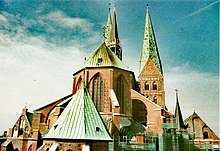
Return to Weimar (1708–17)
In 1708, Bach left Mühlhausen, returning to Weimar this time as organist and from 1714 Konzertmeister (director of music) at the ducal court, where he had an opportunity to work with a large, well-funded contingent of professional musicians. Bach moved with his family into a (demolished in 1989) house, on Markt 16, very close to the ducal palace. In the following year, their first child was born and Maria Barbara’s elder, unmarried sister joined them. She remained to help run the household until her death in 1729.
Bach’s time in Weimar was the start of a sustained period of composing keyboard and orchestral works. He attained the proficiency and confidence to extend the prevailing structures and to include influences from abroad. He learned to write dramatic openings and employ the dynamic motor rhythms and harmonic schemes found in the music of Italians such as Vivaldi, Corelli, and Torelli. Bach absorbed these stylistic aspects in part by transcribing Vivaldi’s string and wind concertos for harpsichord and organ; many of these transcribed works are still regularly performed. Bach was particularly attracted to the Italian style in which one or more solo instruments alternate section-by-section with the full orchestra throughout a movement.
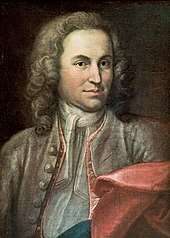
In Weimar, Bach continued to play and compose for the organ, and to perform concert music with the duke’s ensemble. He also began to write the preludes and fugues which were later assembled into his monumental workThe Well-Tempered Clavier (Das Wohltemperierte Klavier (BWV 846-893)—Klavier meaning clavichord or harpsichord), consisting of two books, compiled in 1722 and 1744, each containing 24 preludes and fugues in every major and corresponding minor key.
Also in Weimar Bach started work on the Little Organ Book, containing traditional Lutheran chorales (hymn tunes) set in complex textures. In 1713, Bach was offered a post in Halle when he advised the authorities during a renovation by Christoph Cuntzius of the main organ in the west gallery of the Market Church of Our Dear Lady. Johann Kuhnau and Bach played again when it was inaugurated in 1716.
In the spring of 1714, Bach was promoted to Konzertmeister, an honor that entailed performing a church cantata monthly in the castle church. The first three cantatas Bach composed in Weimar were Himmelskönig, sei willkommen, BWV 182, for Palm Sunday, which coincided with the Annunciation that year, Weinen, Klagen, Sorgen, Zagen, BWV 12, for Jubilate Sunday, and Erschallet, ihr Lieder, erklinget, ihr Saiten! BWV 172 forPentecost. Bach’s first Christmas cantata Christen, ätzet diesen Tag, BWV 63 was premiered in 1714 or 1715.
In 1717, Bach eventually fell out of favor in Weimar and was, according to a translation of the court secretary’s report, jailed for almost a month before being unfavorably dismissed: “On November 6, [1717], the quondam concertmaster and organist Bach was confined to the County Judge’s place of detention for too stubbornly forcing the issue of his dismissal and finally on December 2 was freed from arrest with notice of his unfavorable discharge.”
Köthen (1717–23)
Leopold, Prince of Anhalt-Köthen hired Bach to serve as his Kapellmeister (director of music) in 1717. Prince Leopold, himself a musician, appreciated Bach’s talents, paid him well, and gave him considerable latitude in composing and performing. The prince was Calvinist and did not use elaborate music in his worship; accordingly, most of Bach’s work from this period was secular, including the orchestral suites, the cello suites, the sonatas and partitas for solo violin, and the Brandenburg Concertos. Bach also composed secular cantatas for the court such as Die Zeit, die Tag und Jahre macht, BWV 134a. A significant influence upon Bach’s musical development during his years with the Prince is recorded by Stauffer as Bach’s “complete embrace of dance music, perhaps the most important influence on his mature style other than his adoption of Vivaldi’s music in Weimar”.

Despite being born in the same year and only about 130 kilometers (81 mi) apart, Bach and Handel never met. In 1719, Bach made the 35-kilometer (22 mi) journey from Köthen to Halle with the intention of meeting Handel, however Handel had left the town. In 1730, Bach’s oldest son Wilhelm Friedemann travelled to Halle to invite Handel to visit the Bach family in Leipzig, but the visit did not come to pass.
On 7 July 1720, while Bach was on travel to Carlsbad with Prince Leopold, Bach’s wife suddenly died. The following year, he met Anna Magdalena Wilcke, a young, highly gifted soprano seventeen years his junior, who performed at the court in Köthen; they married on 3 December 1721. Together they had thirteen more children, six of whom survived into adulthood: Gottfried Heinrich; Elisabeth Juliane Friederica (1726–81), who married Bach’s pupil Johann Christoph Altnickol; Johann Christoph Friedrich and Johann Christian, who both became significant musicians; Johanna Carolina (1737–81); and Regina Susanna (1742–1809).
Leipzig (1723–50)
In 1723, Bach was appointed Thomaskantor, Cantor of the Thomasschule at the Thomaskirche (St. Thomas Church) in Leipzig which served four churches in the city, the Thomaskirche, the Nikolaikirche (St. Nicholas Church), the Neue Kirche and the Peterskirche, and musical director of public functions such as city council elections and homages. This was a prestigious post in the mercantile city in the Electorate of Saxony, which he held for twenty-seven years until his death. It brought him into contact with the political machinations of his employer, Leipzig’s city council.
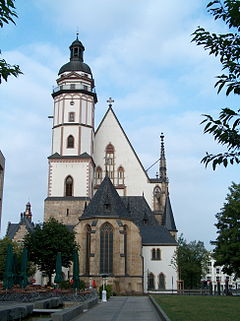
Bach drew the soprano and alto choristers from the School, and the tenors and basses from the School and elsewhere in Leipzig. Performing at weddings and funerals provided extra income for these groups; it was probably for this purpose, and for in-school training, that he wrote at least six motets. As part of his regular church work, he performed other composers’ motets, which served as formal models for his own.
Bach’s predecessor as Cantor, Johann Kuhnau, had also been music director for the Paulinerkirche, the church of Leipzig University. But when Bach was installed as Cantor in 1723, he was put in charge only of music for “festal” (church holiday) services at the Paulinerkirche; his petition to provide music also for regular Sunday services there (for corresponding salary increase) went all the way up to King Augustus IIbut was denied. After this, in 1725, Bach “lost interest” in working even for festal services at the Paulinerkirche and appeared there only on “special occasions”. The Paulinerkirche had a much better and newer (1716) organ than did the Thomaskirche or the Nikolaikirche. Bach had been consulted officially about the 1716 organ after its completion, came from Köthen, and submitted a report. Bach was not required to play any organ in his official duties, but it is believed he liked to play on the Paulinerkircheorgan “for his own pleasure”.

Bach broadened his composing and performing beyond the liturgy by taking over, in March 1729, the directorship of the Collegium Musicum, a secular performance ensemble started by the composer Georg Philipp Telemann. This was one of the dozens of private societies in the major German-speaking cities that was established by musically active university students; these societies had become increasingly important in public musical life and were typically led by the most prominent professionals in a city. In the words of Christoph Wolff, assuming the directorship was a shrewd move that “consolidated Bach’s firm grip on Leipzig’s principal musical institutions”. Year round, the Leipzig’s Collegium Musicum performed regularly in venues such as the Café Zimmermann, a coffeehouse on Catherine Street off the main market square. Many of Bach’s works during the 1730s and 1740s were written for and performed by the Collegium Musicum; among these were parts of his Clavier-Übung (Keyboard Practice) and many of his violin and keyboard concertos.In 1733, Bach composed a mass for the Dresden court (Kyrie and Gloria) which he later incorporated in his Mass in B minor. He presented the manuscript to the King of Poland, Grand Duke of Lithuania and Elector of Saxony, Augustus III in an eventually successful bid to persuade the monarch to give him the title of Royal Court Composer. He later extended this work into a full mass, by adding a Credo, Sanctus and Agnus Dei, the music for which was partly based on his own cantatas, partly new composed. Bach’s appointment as court composer was part of his long-term struggle to achieve greater bargaining power with the Leipzig council.
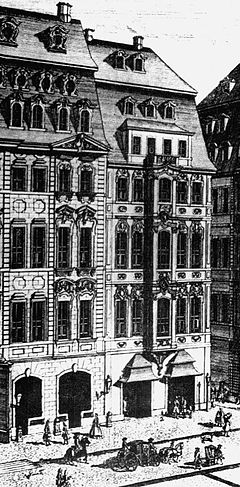
In 1735 Bach’s youngest son Johann Christian Bach was born. In childhood he “enjoyed his father’s particular affection” and had “precocious talents.” He grew up to become a composer, but in a galant style rather than his father’s baroque style. In 1762 he travelled to England, gained repute there, and became music master to Queen Charlotte.
Between 1737 and 1739, Bach’s former pupil Carl Gotthelf Gerlach took over the directorship of the Collegium Musicum.
In 1747, Bach visited the court of King Frederick II at Potsdam. The king played a theme for Bach and challenged him to improvise a fugue based on his theme. Bach improvised a three-part fugue on one of Frederick’s fortepianos, then a novelty, and later presented the king with a Musical Offering which consists of fugues, canons and a trio based on this theme. Its six-part fugue includes a slightly altered subject more suitable for extensive elaboration.
In the same year, Bach joined the Corresponding Society of the Musical Sciences (Correspondierende Societät der musikalischen Wissenschafften) of Lorenz Christoph Mizler. On the occasion of his entry into the Society, Bach composed the Canonic Variations on “Vom Himmel hoch da komm’ ich her” (BWV 769). A portrait had to be submitted by each member of the Society, so in 1746, during the preparation of Bach’s entry, the famous Bach-portrait was painted by Elias Gottlob Haussmann. The Canon triplex á 6 Voc (BWV 1076) on this portrait was dedicated to the Society. Other late works by Bach may also have a connection with the music theory based Society. One of those works was The Art of Fugue, which consists of eighteen complex fugues and canons based on a simple theme. The Art of the Fugue was only published posthumously in 1751.
Bach’s last large work was the Mass in B minor (1748–49) which Stauffer describes as “Bach’s most universal church work. Consisting mainly of recycled movements from cantatas written over a thirty-five year period, it allowed Bach to survey his vocal pieces one last time and pick select movements for further revision and refinement.” Although the complete mass was never performed during the composer’s lifetime, it is considered to be among the greatest choral works of all time.
Death (1750)
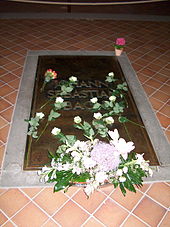
Bach’s health declined in 1749; on 2 June, Heinrich von Brühl wrote to one of the Leipzig burgomasters to request that his music director, Johann Gottlob Harrer, fill the Thomaskantor and Director musices posts “upon the eventual … decease of Mr. Bach”. Bach was becoming blind, so the British eye surgeon John Taylor operated on Bach while visiting Leipzig in March or April 1750.
On 28 July 1750, Bach died at the age of 65. A contemporary newspaper reported “the unhappy consequences of the very unsuccessful eye operation” as the cause of death. Spitta gives some details. He says that Bach died of “apoplexy”, a stroke. He, along with the newspaper, says that “Medical treatment associated with the [failed eye] operation had such bad effects that his health … was severely shaken” and Bach was left totally blind. His son Carl Philipp Emanuel and his pupil Johann Friedrich Agricola wrote an obituary of Bach. In 1754, it was published by Lorenz Christoph Mizler in the musical periodical Musikalische Bibliothek. This obituary arguably remains “the richest and most trustworthy” early source document about Bach.
Bach’s estate included five harpsichords, two lute-harpsichords, three violins, three violas, two cellos, a viola da gamba, a lute and a spinet, and fifty-two “sacred books”, including books by Martin Luther and Josephus. He was originally buried at Old St. John’s Cemetery in Leipzig. His grave went unmarked for nearly 150 years. In 1894, his remains were located and moved to a vault in St. John’s Church. This building was destroyed by Allied bombing during World War II, so in 1950 Bach’s remains were taken to their present grave in St. Thomas Church. Later research has called into question whether the remains in the grave are actually those of Bach.
Legacy
After his death, Bach’s reputation as a composer at first declined; his work was regarded as old-fashioned compared to the emerging galant style. Initially he was remembered more as a virtuoso player of the organ and as a teacher.
Many of Bach’s unpublished manuscripts were distributed among his wife and musician sons at the time of his death. Unfortunately, the poor financial condition of some of the family members led to the sale and subsequent loss of parts of Bach’s compositions, including over one hundred cantatas and his St Mark Passion, of which no copies are known to survive.
During the late 18th and early 19th century, Bach was recognized by several prominent composers for his keyboard work. Wolfgang Amadeus Mozart,Ludwig van Beethoven, Frédéric Chopin, Robert Schumann, and Felix Mendelssohn were among his admirers; they began writing in a more contrapuntal style after being exposed to Bach’s music. Beethoven described him as “Urvater der Harmonie“, the “original father of harmony”.
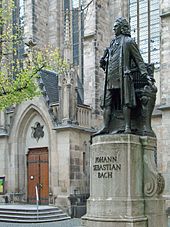
Bach’s reputation among the wider public was enhanced in part by Johann Nikolaus Forkel’s 1802 biography of the composer. Felix Mendelssohn significantly contributed to the renewed interest in Bach’s work with his 1829 Berlin performance of the St Matthew Passion. In 1850, the Bach-Gesellschaft (Bach Society) was founded to promote the works; in 1899 the Society published a comprehensive edition of the composer’s works with little editorial intervention.
During the 20th century, the process of recognizing the musical as well as the pedagogic value of some of the works continued, perhaps most notably in the promotion of the cello suites by Pablo Casals, the first major performer to record these suites. Another development has been the growth of the historically informed performance movement, which attempts to take into account the aesthetic criteria and performance practice of the period in which the music was conceived. Examples include the playing of keyboard works on harpsichord rather than modern grand piano and the use of small choirs or single voices instead of the larger forces favored by 19th- and early 20th-century performers.
The liturgical calendar of the Episcopal Church remembers Bach annually with a feast day on 28 July, together with George Frideric Handel and Henry Purcell; the Calendar of Saints of the Lutheran Church, on the same day remembers Bach and Handel with Heinrich Schütz. In other circles, Bach’s music is bracketed with the literature of William Shakespeare and the science of Isaac Newton.
During the 20th century, many streets in Germany were named and statues were erected in honor of Bach. A large crater in the Bach quadrangle on Mercury is named in Bach’s honor as are the main-belt asteroids 1814 Bach and 1482 Sebastiana. Bach’s music features three times—more than that of any other composer—on the Voyager Golden Record, a gramophone record containing a broad sample of the images, common sounds, languages, and music of Earth, sent into outer space with the two Voyager probes.
Contributors and Attributions
- Johann Sebastian Bach. Provided by: Wikipedia. Located at: https://en.Wikipedia.org/wiki/Johann_Sebastian_Bach. License: CC BY-NC-SA: Attribution-NonCommercial-ShareAlike
- Wood carving. Authored by: Chacien. Located at: https://www.flickr.com/photos/chacien/3626075750/. License: CC BY-NC-ND: Attribution-NonCommercial-NoDerivatives

